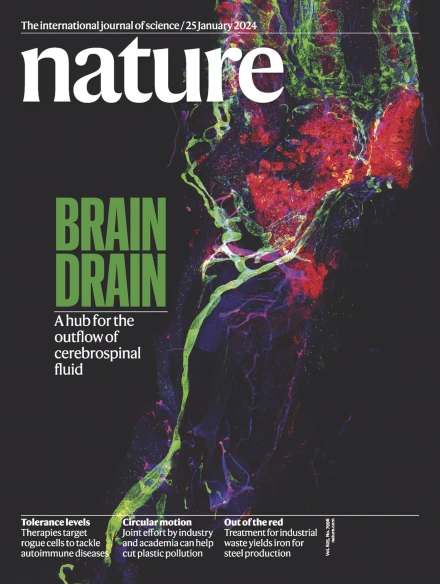四倍体欧洲马铃薯的阶段性泛基因组
IF 48.5
1区 综合性期刊
Q1 MULTIDISCIPLINARY SCIENCES
引用次数: 0
摘要
土豆第一次被带到欧洲是在16世纪。两百年后,其中一个物种成为整个大陆乃至整个世界最重要的食物来源之一。然而,其高度杂合的同源四倍体基因组从那时起就使其改良复杂化了4,5,6,7。在这里,我们展示了从10个历史马铃薯品种的分阶段基因组组装产生的欧洲马铃薯的泛基因组,其中包括在欧洲分离的所有单倍型的约85%。单倍型之间的序列多样性非常高(例如,比人类高20倍),这是由于来自野生马铃薯物种的大量渗入。相比之下,单倍型多样性非常低,这与驯化和向欧洲过渡造成的种群瓶颈一致。为了说明泛基因组的实际应用,我们将其转换成单倍型图,并使用它来生成分阶段的、百万级规模的商业马铃薯(包括著名的法式炸薯条“Russet Burbank”)的伪基因组组装,只使用经济高效的短读。总之,我们提出了一个几乎完整的同源四倍体欧洲马铃薯的泛基因组,我们描述了驯化作物中非常高的序列多样性,我们概述了如何利用这一资源来加速基因组学辅助育种和研究。本文章由计算机程序翻译,如有差异,请以英文原文为准。


The phased pan-genome of tetraploid European potato
Potatoes were first brought to Europe in the sixteenth century1,2. Two hundred years later, one of the species had become one of the most important food sources across the entire continent and, later, even the entire world3. However, its highly heterozygous, autotetraploid genome has complicated its improvement since then4–7. Here we present the pan-genome of European potatoes generated from phased genome assemblies of ten historical potato cultivars, which includes approximately 85% of all haplotypes segregating in Europe. Sequence diversity between the haplotypes was extremely high (for example, 20× higher than in humans), owing to numerous introgressions from wild potato species. By contrast, haplotype diversity was very low, in agreement with the population bottlenecks caused by domestication and transition to Europe. To illustrate a practical application of the pan-genome, we converted it into a haplotype graph and used it to generate phased, megabase-scale pseudo-genome assemblies of commercial potatoes (including the famous French fries potato ‘Russet Burbank’) using cost-efficient short reads only. In summary, we present a nearly complete pan-genome of autotetraploid European potato, we describe extraordinarily high sequence diversity in a domesticated crop, and we outline how this resource might be used to accelerate genomics-assisted breeding and research. A haplotype-resolved pan-genome of autotetraploid European potato founder lines shows high nucleotide diversity at remarkably low haplotype diversity, which is probably the result of hybridization events with wild potato species, followed by population bottlenecks during domestication and transition to Europe.
求助全文
通过发布文献求助,成功后即可免费获取论文全文。
去求助
来源期刊

Nature
综合性期刊-综合性期刊
CiteScore
90.00
自引率
1.20%
发文量
3652
审稿时长
3 months
期刊介绍:
Nature is a prestigious international journal that publishes peer-reviewed research in various scientific and technological fields. The selection of articles is based on criteria such as originality, importance, interdisciplinary relevance, timeliness, accessibility, elegance, and surprising conclusions. In addition to showcasing significant scientific advances, Nature delivers rapid, authoritative, insightful news, and interpretation of current and upcoming trends impacting science, scientists, and the broader public. The journal serves a dual purpose: firstly, to promptly share noteworthy scientific advances and foster discussions among scientists, and secondly, to ensure the swift dissemination of scientific results globally, emphasizing their significance for knowledge, culture, and daily life.
 求助内容:
求助内容: 应助结果提醒方式:
应助结果提醒方式:


